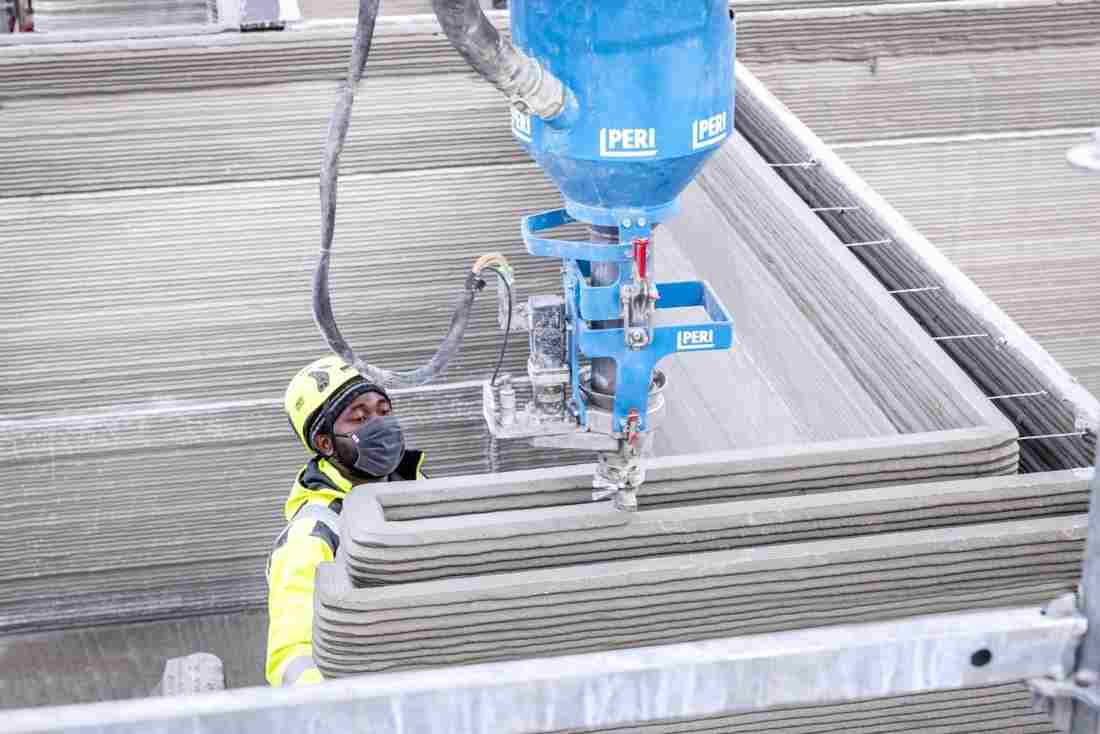


How essential 3D Printing in Construction has become and how it has transformed each task in the construction process for achieving improved results.
3D Printing in Construction is considered to be one of the most impactful technological advancements. With the help of this technology, customization in structural design and the fast creation of models of prototypes have made the construction easier. As per the statistics, by 2022, the 3D printing market was valued at $3.42 billion. With rapid growth and increased demand, the projected value in 2032 is around $485 billion.
This technology can create 3D models and prototypes of a building. It is able to convert digital plans into tangible structures. It does so by creating layers using specific materials. It continuously adds layers on top of each other until a complete structure is created. It receives data from a computer-aided program (CAD), which guides it through the printing process. This technology is so advanced that it can construct individual walls or other components as well.
This is an essential part of the pre-construction phase. With 3D printing, developing prototypes for various building designs can streamline the construction process. It is also possible to create multiple prototypes in less time.
Prototyping helps in assuring accurate measurements for cost estimates. Not only can it create a prototype of an entire building, but it can also be highly viable for 3D Printing Building Materials separately. Designers and architects can develop specific components for testing. Thus, allowing them to optimize a building’s structure from foundation to walls.
A robotic arm that is programmed to move automatically allows flexible movements. By inputting data into a 3D printer, it can start the printing process and perform multiple tasks. It can also print a prototype from multiple angles.
This is the stage where 3D printing for construction starts. In a gantry, rails are mounted on the floor, acting as guides for printing, creating layers with a robotic arm.
In this method, a layer of powder is added to the surface, then sprayed with a binding structure, resulting in a solid substance. The binding material can be metal, ceramic, sand, etc. Designers can create detailed shapes using thin binding jets. The process involves repeating the binding of each layer.
It is the most widely used technique for 3D Printing in Construction. It can be an ideal choice for any environmental condition. This can be used for prototyping and production. An object is developed by layering material back and forth using one or multiple nozzles, located on a robotic arm or gantry system.
Once the process is determined, it’s time to choose printing materials. The realm of 3D printing is constantly growing, leading to more material choices. The type of material must align with the project. Here are some common materials:
Metal
Plastic
Concrete
Mortar
Stone
Sand
Mud
3D printing can make MEP Estimates more accurate. With 3D printing, prototypes of MEP components can be created, showing the MEP system in detail based on digital designs. It can also detect and rectify issues before physical construction, reducing errors and contributing to cost effectiveness.
With 3D printing, material management becomes efficient. Material is estimated in precise quantities, minimizing material wastage during construction. In simple words, Construction Takeoff Services become faster and more accurate by using this technology.
This technology has made construction easier. 3D printing now has a strong footing in the construction industry. Let’s discuss how it has changed construction:
Projects are now finished within the set timeframe.
It provides sustainable and cost-effective solutions by identifying issues early.
It has made the work environment safer.
It offers great design flexibility and adaptability.
Wrapping it all up, 3D Printing in Construction has made the process quicker and easier. This technology offers a variety of advantages across each phase of construction. To understand what 3D printing is and how it has turned the tables in the world of consumers, read this article. It provides a comprehensive breakdown of everything you need to know about 3D printing.
